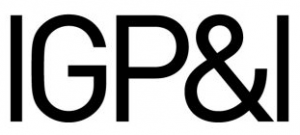Australia’s mandatory biofouling management requirementsentered into force on 15 June 2022. All operators of international vessels subject to biosecurity control are now required to provide information on how biofouling has been managed prior to arriving in Australian territorial seas. This information shall be reported through the Australian Maritime Arrivals Reporting System (MARS).
According to the Australian Government’s Department of Agriculture, Water and the Environment (DAWE), the information is used to target vessel interventions and vessel operators will receive less intervention for biofouling if they comply with one of the following three accepted biofouling management practices:
Implementation of an effective biofouling management plan; or
Cleaned all biofouling within 30 days prior to arriving in Australia; or
Implementation of an alternative biofouling management method pre-approved by the Australian authorities.
DAWE has further announced that it will be taking an educational initial approach to enforcing the new requirements between 15 June 2022 and 15 December 2023. During this period, focus will be on providing education and advice to vessel operators with the aim of minimizing unintentionally incorrect pre-arrival reporting and improve the effectiveness of biofouling management plans. However, powers under the Australian Biosecurity Act 2015 will continue to be used to manage unacceptable biosecurity risks associated with biofouling.
The Australian regulations and associated guidance documents can be downloaded from the DAWE website: Managing biofouling in Australia.
The biodiversity threat
The introduction of invasive aquatic species (IAS) associated with global shipping has been identified as a significant threat to the world’s oceans and coastal ecosystems. A multitude of species, carried either in vessels’ ballast water or on vessels’ hulls, are capable of surviving transit to new environments where they may become invasive by multiplying and out-competing native species. Not all species transported by vessels will become invasive, and not all survive the journey. However, it is difficult to predict which species may arrive and where and when an introduced species will start to spread by itself into new areas and damage the local ecosystem. Even species that originally do not seem harmful may become invasive if environmental conditions such as temperature and nutrients change. Management practices that prevent the introduction of IAS are therefore a far more efficient and cost-effective approach to the problem than clean-ups once an invasive species has established in a new area.
While the risk posed by IAS in vessels’ ballast water is now regulated internationally under the IMO Ballast Water Management Convention, the control of vessel biofouling remains largely voluntary. As a result, individual governments develop their own strategies and policies to reduce the introduction of foreign species from bio fouling of vessels’ hull. The most comprehensive biofouling management policies in the past have been those of New Zealand and the US State of California – but now they have been joined by Australia.
An underestimated cost for vessel operators and the environment?
Biofouling growth on vessels’ hulls is not only a threat to marine biodiversity but also a long-standing operational problem for the maritime industry. Its impact on vessel speed and propulsion, and ultimately fuel consumption and atmospheric emissions, is well documented. A report on fuel efficiency resulting from good biofouling management published by the GloFouling Partnership Project even concludes that the perceived impact of vessels’ biofouling on greenhouse gas (GHG) emissions is likely to have been historically underestimated by the shipping community. For example:
A layer of slime as thin as 0.5 mm and covering up to 50% of a hull surface can trigger an increase of GHG emissions in the range of 25 to 30%, depending on vessel characteristics, speed, and other prevailing conditions.
For more severe biofouling conditions, such as a light layer of small calcareous growth (barnacles or tubeworms), an average length container vessel can see an increase in GHG emissions of up to 60%, dependent on vessel characteristics and speed.
Besides increased fuel costs and potential cost-intensive hull cleaning required by port authorities, there are also other biofouling-related economic implications for vessel operators. Extensive vessel biofouling can increase engine wear and affect intakes and internal seawater systems, requiring earlier and more frequent maintenance and asset management costs than would otherwise be needed. Some even argue that reduced vessel speed and longer voyages mean increasing crew costs relative to the distance of travel routes.
Regulations, standards and practices
One of the key findings of a second report published by the GloFouling Partnership Project is that inconsistency in current biofouling and in-water cleaning policies creates a major challenge for the shipping industry. The report analyses the current and emerging regulatory environment for biofouling management and identifies several regional, national and sub-national biofouling policies and practices already in place. However, it also concludes that comprehensive biofouling management policies are not widespread and those that do implement comprehensive policies, such as New Zealand and California, are not consistent.
Of the many guidelines and industry standards relevant to biofouling management, the most wide-ranging are the IMO Biofouling Guidelines. These non-mandatory guidelines aim to provide a globally consistent approach to the management of biofouling and include best practice recommendations for minimising biofouling. A key component of the guidelines is the preparation of vessel-specific biofouling management plans (BFMP) and biofouling record books (BFRB). There are also specific recommendations for what to include in a BFMP and BFRB, and a template for each. This documentation is also the cornerstone of many current and proposed national and sub-national biofouling management policies and practices, such as those of New Zealand, California, and more recently, Australia. Provision of this documentation is also expected to be a key requirement under US federal law once the new vessel discharge standards, proposed under its Vessel Incidental Discharge Act (VIDA), have been finalized and standards for implementation agreed.
It is also worth noting that:
The IMO Biofouling Guidelines are currently being reviewed by IMO Member States and a new version is expected to be approved in 2023. The aim is to make the guidelines clearer by being more specific on the recommended biofouling measures, how to implement the measures, as well as on the procedures for inspection and cleaning. The next version of the IMO Biofouling guidelines will remain non-mandatory and will hence not provide specific international rules or standards for the regulation of biofouling management.
Although there is an obvious relationship between the mandatory IMO Convention on the Control of Harmful Anti-fouling Systems (AFS) on Ships and biofouling management, implementation of the Convention does not equate to having a biofouling management policy. The AFS Convention provides a framework to limit the impact of harmful AFS but does not regulate or set performance standards for the AFS.
The time to act is now
Finding the ‘right way’ to handle biofouling can present some challenges as the biofouling risk and management options will be different for each vessel depending on design, operating profile, and trading routes. However, with new biofouling regulations entering into force, and the IMO GHG reduction targets looming on the horizon, we encourage vessel operators to revisit and, if necessary, update their biofouling management procedures. Steps should be taken to ensure regulatory compliance with mandatory biosecurity requirements where in force. An additional benefit is that it will optimize operations in terms of fuel consumption, maintenance frequencies, and emissions into the atmosphere.
Although not all regional biofouling regulations are the same, compliance with the IMO Biofouling Guidelines will go a long way towards allowing access to ports with mandatory biofouling requirements. The establishment of vessel specific biofouling management strategies and procedures in the form of BFMPs is key, as is proper onboard record keeping. An up-to-date BFRB will assist port officials to assess a vessel’s potential quickly and efficiently for biofouling risk and thus minimize any delays to its operation.
Current biofouling management solutions primarily include the use of anti-fouling coatings, marine growth prevention systems, such as the use of anodes, ultrasound, etc., and hull cleaning, either while in water or in drydock. However, each solution is assessed to have its advantages and disadvantages depending on a vessels’ design and operating profiles, they should all form part of a holistic hull management approach by vessel operators. Advice should also be taken from the industry standard on in-water cleaning of ships published by BIMCO and the International Chamber of Shipping (ICS). However, as individual ports may impose restrictions on in-water cleaning, depending on the methods and chemicals involved, we recommend that operators verify the applicable requirements with the vessel’s local agent well before arrival at the planned location for cleaning.
Please visit the GloFouling Partnership Project’s “Knowledge Hub” for additional information and awareness material on biofouling. All project publications are available for download via this hub.




